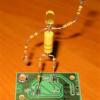
do i really need a PID loop?
Started by
justwhy2003,
5 posts in this topic
Create an account or sign in to comment
You need to be a member in order to leave a comment

Started by
justwhy2003,
You need to be a member in order to leave a comment